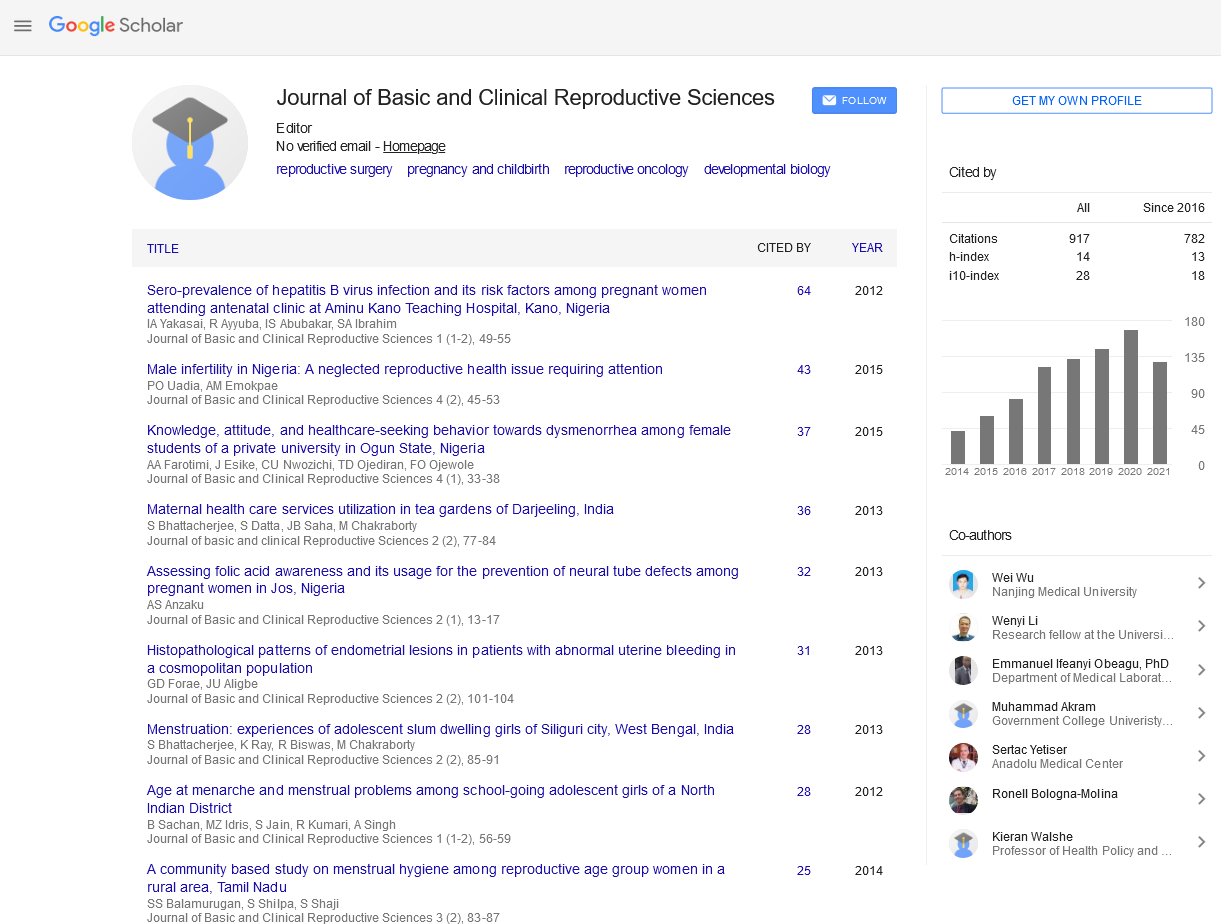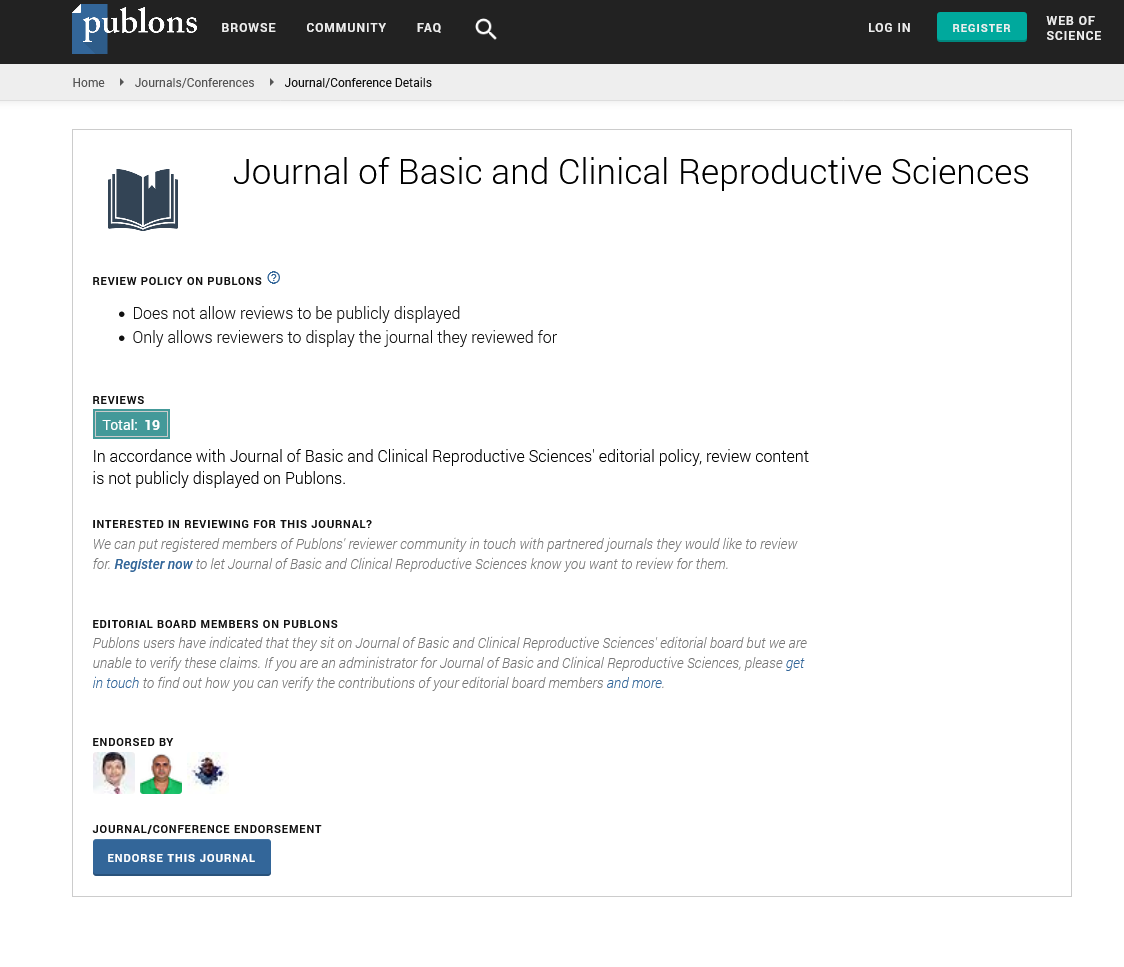Commentary - Journal of Basic and Clinical Reproductive Sciences (2023) Volume 12, Issue 2
Oncofertility: A Magnificent Cooperation for Fertility Preservation in Cancer Patients
Received: 29-Mar-2023, Manuscript No. JBCRS-23-99666; Editor assigned: 31-Mar-2023, Pre QC No. JBCRS-23-99666 (PQ); Reviewed: 14-Apr-2023 QC No. JBCRS-23-99666; Revised: 21-Apr-2023, Manuscript No. JBCRS-23-99666 (R); Published: 28-Apr-2023
This open-access article is distributed under the terms of the Creative Commons Attribution Non-Commercial License (CC BY-NC) (http://creativecommons.org/licenses/by-nc/4.0/), which permits reuse, distribution and reproduction of the article, provided that the original work is properly cited and the reuse is restricted to noncommercial purposes. For commercial reuse, contact reprints@pulsus.com
Description
Cancer treatment has advanced significantly over the years, offering improved survival rates and better quality of life for patients. However, the impact of cancer therapies on fertility remains a significant concern for many young patients. Oncofertility, a multidisciplinary field, aims to provide reproductive options for individuals diagnosed with cancer. This manuscript explores the remarkable collaboration between oncologists, reproductive specialists, and patients, highlighting the importance of oncofertility in preserving fertility and enhancing the overall well-being of cancer survivors. With a focus on current techniques, challenges, and future directions, this manuscript showcases the pivotal role of oncofertility in cancer care.
The diagnosis of cancer can be devastating for individuals of reproductive age who desire to have children in the future. The detrimental effects of cancer therapies, such as chemotherapy, radiation, and surgery, on fertility can significantly impact the long-term quality of life for survivors. Oncofertility serves as a bridge between oncology and reproductive medicine, offering innovative strategies to preserve fertility and provide hope to patients facing cancer treatment. This manuscript explores the collaboration among healthcare providers, patients, and researchers to overcome the challenges of fertility preservation in cancer patients.
Oncofertility encompasses a range of techniques that can be tailored to individual patients’ needs. Cryopreservation of gametes (sperm and oocytes) and embryos remains the gold standard for fertility preservation. Additionally, ovarian tissue cryopreservation and transplantation have emerged as promising options, particularly for prepubertal patients. Advances in assisted reproductive technologies, such as in vitro maturation and in vitro follicle activation, offer additional possibilities. These techniques, when applied by skilled reproductive specialists, contribute to the success of oncofertility interventions.
The success of oncofertility relies on the seamless collaboration between oncologists and reproductive specialists. Oncologists play a crucial role in counseling patients about fertility preservation options and incorporating them into treatment plans. The timely referral to reproductive specialists ensures that patients have access to the most appropriate techniques and that fertility preservation procedures are conducted efficiently. Additionally, psychologists and social workers are essential in providing emotional support and addressing the psychosocial aspects associated with fertility preservation and cancer diagnosis.
Empowering patients to make informed decisions is a key aspect of oncofertility. Healthcare providers must engage in open and honest communication with patients, discussing the potential impact of cancer treatments on fertility and the available fertility preservation options. Educating patients about the risks, benefits, and limitations of each technique enables them to make choices aligned with their values and preferences. Shared decision-making empowers patients and promotes their overall well-being throughout the cancer treatment journey.
Despite the progress made in oncofertility, several challenges persist. Financial barriers, limited awareness among healthcare providers, and the need for improved insurance coverage pose significant obstacles to accessing fertility preservation services. Furthermore, research efforts should focus on optimizing existing techniques, exploring novel approaches, and expanding options for individuals with unique circumstances, such as hormone- sensitive cancers or urgent treatment requirements. Continued collaboration among healthcare professionals, policymakers, and patient advocacy groups is essential to address these challenges and advance the field of oncofertility.
Oncofertility represents an extraordinary collaboration between oncology and reproductive medicine, revolutionizing the landscape of cancer care. Through the combined efforts of healthcare providers, patients, and researchers, fertility preservation options are increasingly available, empowering cancer survivors to fulfill their dreams of parenthood. As oncofertility continues to evolve, it holds tremendous promise for improving the overall well-being and quality of life for individuals.


